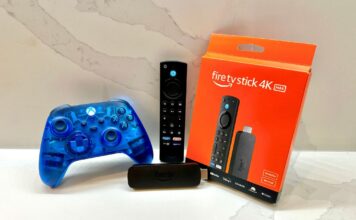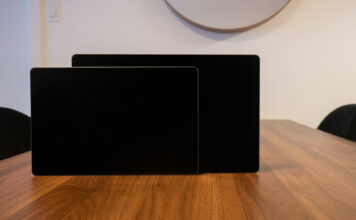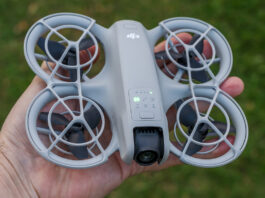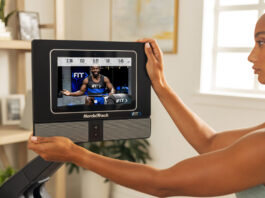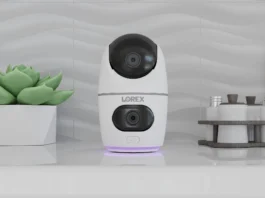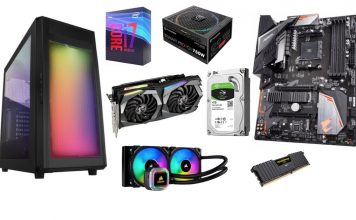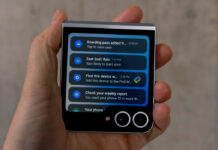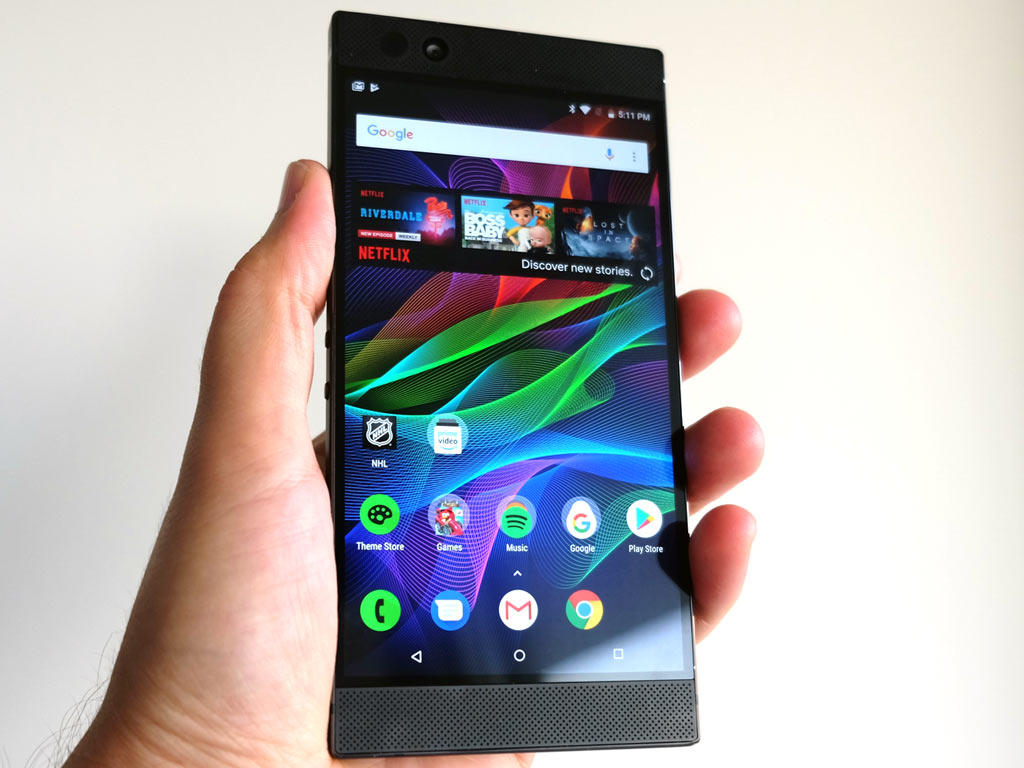
Whether or not the Razer Phone is a mobile gaming device first, and a smartphone second, is debatable. No matter how you define it, it’s a handset that does some things really well.
Razer PhoneDisplay: 5.7-inch 2560 x 1440 IGZO IPS LCD display with 515 pixels per inch |
Razer is new to the world of smartphones. There have been some accessories in the past, but the company’s primary claim to gaming fame has always been in the PC and console realm. This is altogether different. It’s a smartphone that has been packed with certain components and features to make it a solid multimedia device.
The unique situation does lead to a proverbial fork in the road. As good as the phone is in key aspects, there are a couple others that balance the scale.
A gamer’s design
Manufacturers like to carve out niches wherever they can when it comes to making a smartphone. Razer, being a rookie in that respect, naturally sought to bring its gaming credentials to a handset built for it. To call the Razer Phone a ‘gaming phone’ isn’t a bug, it’s the feature.
The body’s boxy design isn’t about winning accolades, it’s the way the pieces inside work. The 5.7-inch display has a 1440p resolution with a 120Hz refresh rate. The latter is all but unheard of in a smartphone. Indeed, it is the first phone to sport such a feature.
That, working in tandem with the Dolby Atmos-tuned stereo speakers only serves to clarify what the priority should be here. Seeing 8GB of RAM on a phone is rare at this point, though I would’ve liked to see Razer up the internal storage to 128GB. It’s 64GB, as is, and the microSD card slot can expand that up to 400GB and beyond.
By and large, the phone’s overall form factor is bigger than one would expect at this stage. But there’s a reason for it. The larger bezels on top and below make room for the stereo speakers, while providing the space to hold the phone in landscape for games.
Except there’s no headphone jack. Razer did include an adapter to plug into the USB-C port that works with wired headphones, but it’s something you need to be careful not to misplace. Bluetooth wireless headphones are really the only other option.
Playing games
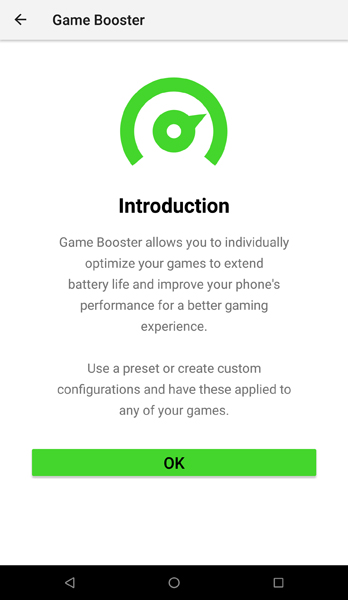 Razer accomplished one thing out of the gate: the screen and audio quality are immediately noticeable. I’m hard-pressed to crown another phone with better speakers than this one. Loud, clear, plus THX certification and Dolby Atmos tuning to boot, there is simply no equal that I’ve laid hands on.
Razer accomplished one thing out of the gate: the screen and audio quality are immediately noticeable. I’m hard-pressed to crown another phone with better speakers than this one. Loud, clear, plus THX certification and Dolby Atmos tuning to boot, there is simply no equal that I’ve laid hands on.
The screen’s faster refresh rate means it can go up to 120fps. That translated to faster and smoother transitions when navigating the interface, but the real impact was on video and gaming.
Two games—Arena of Valor and World of Tanks—were pre-installed on my review unit, with Tekken, Shadowgun Legends and Final Fantasy 15 among others made to work with Razer’s device. Though I’m not one for bloatware on any phone, an app or some way to highlight optimized games on Google Play would’ve been nice.
Granted, this is a handset designed for gaming, so any game would presumably play well on such a device. I point it out more because gauging the phone’s true prowess required playing games that would push it more. Beyond the two already included, I downloaded others, like Batman: The Enemy Within, Gear Club, Into the Dead, Street Fighter IV and World War Heroes.
The fluidity in how each game played underpinned how efficient the phone is at handling any title. Even playing retro ones with an emulator got a boost from the power under the hood.
The Game Booster app is a straightforward settings pane that allows you to prioritize battery life or performance when playing. The beauty of it is you can customize settings for each game. Angry Birds 2 wouldn’t need the same power, say, Arena of Valor might, so I could push the processor and framerate higher for that, while leaving moderate settings for Angry Birds.
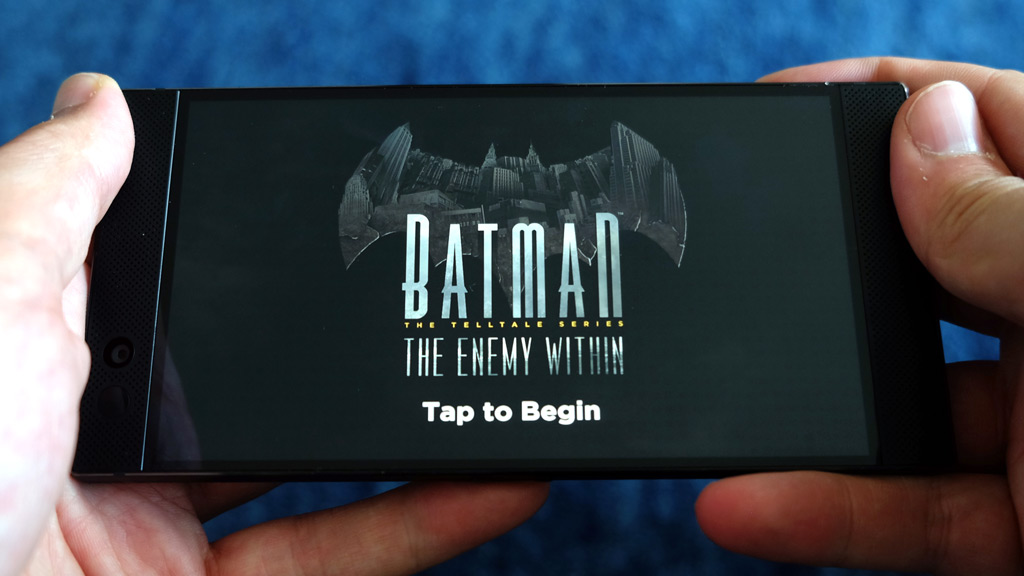
Performance and software
Mind you, there are other benefits to the speed involved. It was obvious by just navigating around the phone that everything felt smoother. The screen was highly responsive, making it easy to like the general quickness inherent in using the device.
Razer didn’t pack the phone with much other than the basic apps one would expect with Android. There is a Theme Store to customize the phone’s look, but that’s about it for the extras.
Instead, the device is left to the user’s own preferences. Streaming content was great, and I never ran into any problems enjoying non-gaming content on the device. The speakers made it easier to enjoy a video—it’s not often I hear a phone that doesn’t have tinny sound.
The additional RAM makes any sort of multitasking smooth and efficient. Again, I had no issues with day-to-day usage in just using apps like I normally would. Call quality was fine, as I was curious to see what Razer would do there. Nothing super exceptional, but really good, nonetheless.

Camera
Every phone has some link that weakens the sum of its parts, and for the Razer Phone, it’s the camera. Razer went with two lenses—a regular 12-megapixel with f/1.7 aperture, and telephoto 12-megapixel with 2x optical zoom and f/2.4 aperture.
The interface is so simplistic that the camera itself is largely devoid of any other features. For instance, there’s no pro or manual mode to at least help shooters capture better compositions. It’s a shame, too, because the phone would’ve benefitted from their inclusion. As is, Razer stuck to a general auto mode that only manages mediocre results.
Toggling HDR on can help, but only marginally. The issue is how dull and out of focus some shots turn out to be. Software updates can help fix those issues, though I’m of the impression that results still wouldn’t match other flagship handsets.
You do have the option of downloading a third-party camera app from Google Play, which may be able to get more out of these lenses and image sensors. Options abound, so there’s plenty of room for some experimentation.
Battery life
It’s not often a phone has a 4000mAh battery inside, but given the size of the body, it should almost be expected. I had little trouble going past a full day with it, though I did notice how certain features could affect each charge.
For example, the Razer put the phone at 90Hz by default, which would take more out of the battery than going to 60Hz. Going to 120Hz, which is best for gaming, does sap even more, so the ability to change settings for each game does make a difference in the grander scheme.
For that reason, I would suggest not keeping the phone at 120Hz, but rather only applying it to games that would benefit from it most. When on that refresh rate, the phone stands no chance of lasting a full day.
Final thoughts
It’s hard for me to recommend the Razer Phone for anyone who doesn’t have even a passive interest in gaming. The desire to play games must be present to really get the most out of it. There are other devices that can function the same way for every other task, not to mention offering better cameras.
If better Android gaming appeals to you, this is a handset well worth considering.
The Razer Phone is available now.









